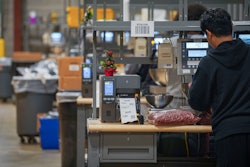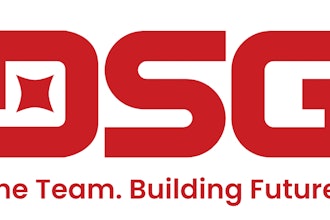Wholesale distributors are seeing their addressable markets change shape and focus at an ever-increasing speed. For example, distributors’ business models are being significantly impacted by the recent rapid growth and adoption of ecommerce. Customers are becoming increasingly comfortable with buying products online so much so that the type and volume of products they are unwilling to purchase via the Internet continues to shrink daily. Distributors are having to quickly develop an e-commerce presence or risk losing potential business and customers.
When buying from distributors, customers anticipate a seamless purchasing experience and to be alerted if there are any supply chain issues. In order to deliver on customer expectations, distributors need to work even more collaboratively than previously with manufacturers, suppliers, and retailers so that everyone involved in the supply chain shares and has access to real-time customer and product information including inventory.
Five Emerging Trends Reshape Distribution
I believe there are five distinct emerging trends, each with strong ties to ecommerce, which are morphing and will continue to reshape the entire wholesale distribution industry. Distributors need to quickly take advantage of all five trends in order to stay competitive and relevant. Here are the first three.
1- Mobile Device Access and Support Continues to Improve. Customers today expect to be able to view, order, and purchase products not only during working hours, when in the office or working remotely, but at any time and from any location. These shifts in purchasing behavior mean that distributors must provide compelling mobile experiences for customers looking to buy online via their smartphones or tablets.
Actionable advice: Distributors need to ensure that the mobile user experience they provide on their ecommerce website is fully optimized for the device a customer is using to access that site and that the site quickly loads and is easily navigable. Distributors also must ensure there is consistency across its ecommerce presence to take into account customers who may begin the purchase process on one type of device but who may end up completing that purchase on a different kind of device.
2 - B2B Fully Embraces Ecommerce. Business-to-business (B2B) customers increasingly are looking for the same ecommerce experience already on offer in the business-to-consumer (B2C) world – an easy-to-use website, which is fairly sophisticated. In part, this move reflects the changing demographics of procurement professionals as more of the older guard retire and are succeeded by individuals who are much more at home with the online world. B2C ecommerce has set high standards for the online experience, product delivery, and after-sales services including returns. Distributors therefore have to provide an equally great B2B ecommerce experience for customers with the ability to take orders 24/7 and provide customers with access to real-time inventory otherwise they will lose their business.
Actionable advice: Distributors need to identify which are the essential features their B2B ecommerce websites must include in order to meet customer needs and which capabilities they can add at a later date. For instance, how important are live chat, price quotes, and product recommendations? Distributors should also think through how they can further differentiate their B2B ecommerce presence from what their competitors provide, particularly in terms of value-added services. For instance, eco-friendly packaging provider BioPak, based in Sydney, Australia, was able to take advantage of the customization capabilities of NetSuite OneWorld to create online carbon tax and least-cost freight calculators which more fully demonstrate the sustainability of its business to both existing and prospective customers. BioPak offsets 100 percent of its calculated greenhouse gas emissions by purchasing carbon offsets which then help fund projects to reduce carbon footprints in developing countries.
3 - AmazonSupply Is a Real and Increasing Competitive Threat. In April 2012, Amazon.com made a significant move into the mainstream distribution business with the launch of AmazonSupply, a broad B2B equipment marketplace built out from SmallParts.com, a niche parts supplier Amazon bought in 2005. Initial market response to AmazonSupply was a mix of skepticism and doubt, but the site has quickly become a force to be reckoned with, already growing from offering 500,000 items across 14 channels at launch to 2.25 million items across 17 channels towards the end of 2014.
Actionable advice: Distributors shouldn’t try to duplicate what distribution giants like AmazonSupply and Grainger provide re their range of inventory or to compete against them on price. One approach may be a broad partnership with a huge global distributor, while also competing against them in a much more focused way. Again, it’s more a case of what a distributor can offer in terms of specialized value-added services or in focusing in on one or more product niches. Distributors also have long-term relationships with partners like manufacturers which they can leverage as well as deep industry knowledge and historical data on customer buying patterns which could all be potentially productized or turned into a value-added service. Distributors should also look outside their own industry for ideas on potential new products and services which they then could adapt and apply to their own businesses.























